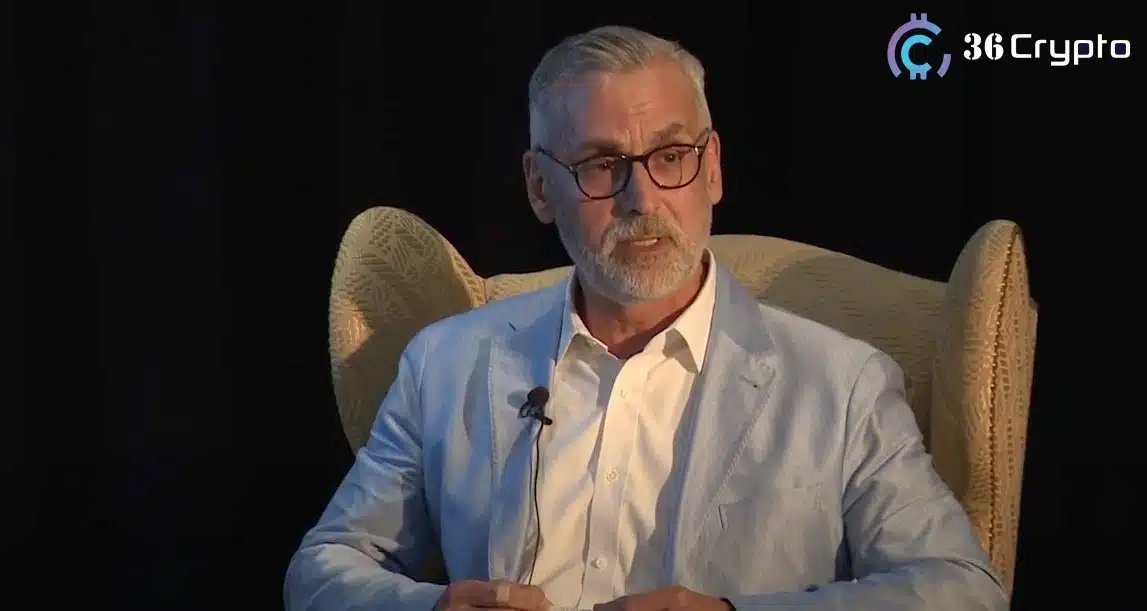Ripple CLO Clarifies: “XRP Has No CEO — It’s Built to Run Without One”
0
0

- Ripple CLO confirms XRP runs independently, without any central leadership.
- Stuart Alderoty explains why XRP’s decentralized design needs no CEO.
- Alderoty endorses Mike Selig to lead U.S. crypto regulatory reform.
The crypto community was stirred after Ripple’s Chief Legal Officer, Stuart Alderoty, made a striking clarification about XRP’s structure. According to Alderoty, XRP operates without a CEO, emphasizing that it was intentionally designed to function independently of centralized control.
His remarks reignited discussions about the true nature of decentralization in the digital asset space.
He was responding to a post by the National Cryptocurrency Association, which stated that Bitcoin has no CEO. Alderoty agreed with the observation and added that the same applies to other open and permissionless networks such as Ethereum, Solana, Cardano and XRP.
He explained that the absence of a CEO is not an ideological statement but a reflection of how decentralized systems are fundamentally built to operate.
Also Read: Pundit: “U.S Crypto Reserve Leaked Everything, All Path Leads to XRP” – Here’s How
Ripple, on the other hand, is a payment solutions company led by CEO Brad Garlinghouse. Alderoty clarified that while Ripple uses XRP to power some of its technologies, the company does not control the digital asset or its ledger.
He noted that XRP functions on the XRP Ledger, which is open-source and decentralized, allowing anyone to build on it without requiring permission.
XRP’s Independence and Decentralized Design
Alderoty went on to explain that XRP’s structure ensures it remains free from executive oversight. This design protects it from single-point authority and promotes fairness within the ecosystem.
He cautioned that only associating the “no CEO” idea with Bitcoin can mislead policymakers into thinking other cryptocurrencies are centrally managed, which could harm fair regulation and understanding of blockchain systems.
XRP was launched in 2012 by David Schwartz, Jed McCaleb and Arthur Britto. After its creation, most of the XRP supply was given to a new company then known as OpenCoin, which later became Ripple. Despite that, the XRP Ledger continues to function as an independent blockchain network that anyone can access, use and develop on.
Alderoty’s comments served as a timely reminder that public blockchains thrive through community participation, not corporate direction. His statement reaffirmed that XRP, like other decentralized cryptocurrencies, operates on principles of transparency, openness and collective governance — not executive control.
Alderoty Backs Mike Selig for CFTC Leadership
In a separate development, Ripple’s Chief Legal Officer publicly endorsed Mike Selig as an ideal choice to lead the U.S. Commodity Futures Trading Commission. According to Alderoty, Selig’s extensive background in financial regulation makes him the right person to strengthen coordination between the CFTC and the SEC.
He stressed that Selig’s leadership could simplify overlapping rules and address regulatory fragmentation in the crypto sector.
Selig currently serves as a senior official at the Securities and Exchange Commission and has previously worked with top law firms such as Willkie Farr & Gallagher and Perkins Coie. His deep understanding of both traditional finance and digital assets gives him an advantage in shaping effective crypto regulation.
Alderoty’s endorsement reflects growing recognition across the industry that expert leadership is needed to guide the next phase of digital asset oversight.
Also Read: CoinShares Moves to Launch XRP ETF on Nasdaq, Expanding Regulated Access for U.S. Investors
The post Ripple CLO Clarifies: “XRP Has No CEO — It’s Built to Run Without One” appeared first on 36Crypto.
0
0
 Manage all your crypto, NFT and DeFi from one place
Manage all your crypto, NFT and DeFi from one placeSecurely connect the portfolio you’re using to start.






